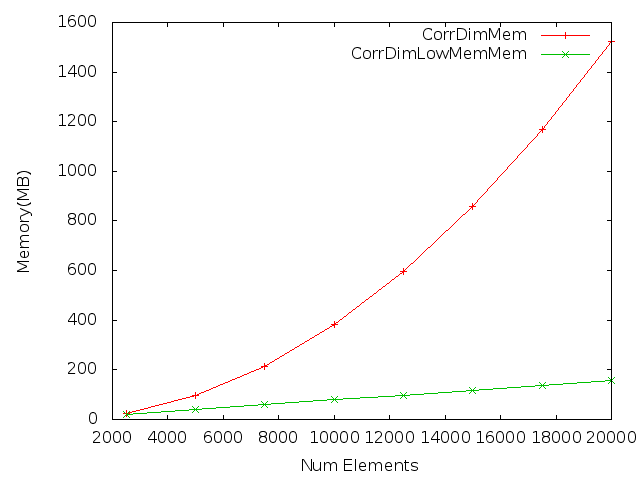After going through this blog written by Bill Maier, I thought why not I give a shot in writing a C++ program to find the correlation dimension and figure out its performance. 'CorrDim' is the result of this. This has some of the most common maps already available within the project folder viz: Logistic map, Tent map and Henon map. Also, adding a map of your choice is a piece of cake, thanks to virtual inheritance. Go through the 'README' file available in the source code to know more on how build and extend this to include more maps. This program supports 2 modes of correlation dimension evaluation:
- Fast but huge memory: In this mode, the distance matrix will be evaluated apriori so that the subsequent lookups are faster. However, this requires huge memory, especially if the number of elements considered is huge.
- 'Relatively' fast but consumes little memory: In this mode, the distance matrix will be evaluated on-the-fly, during the evaluation of the correlation dimension, thus requiring very little memory.
The choice of the mode depends on: If you absolutely cannot sacrifice even a little performance, then you should use the normal version. But for all practical purposes, it is recommended that you use the low-memory version.
Profiling:
Here are the results from profiling this program [Results are on a Dell-Latitude E6400, with Ubuntu 10.10 installed and on LogisticMap.]...
Memory Profiling:
Run-time profiling:
As you can see, the LowMemory version of this program gives a significant reduction in memory footprint compared to its counterpart. At the same time, the performance loss is also not that noticeable.
I have hosted this project (open-source'd with GPL) on github at: git@github.com:teju85/CorrDim.git.


No comments:
Post a Comment